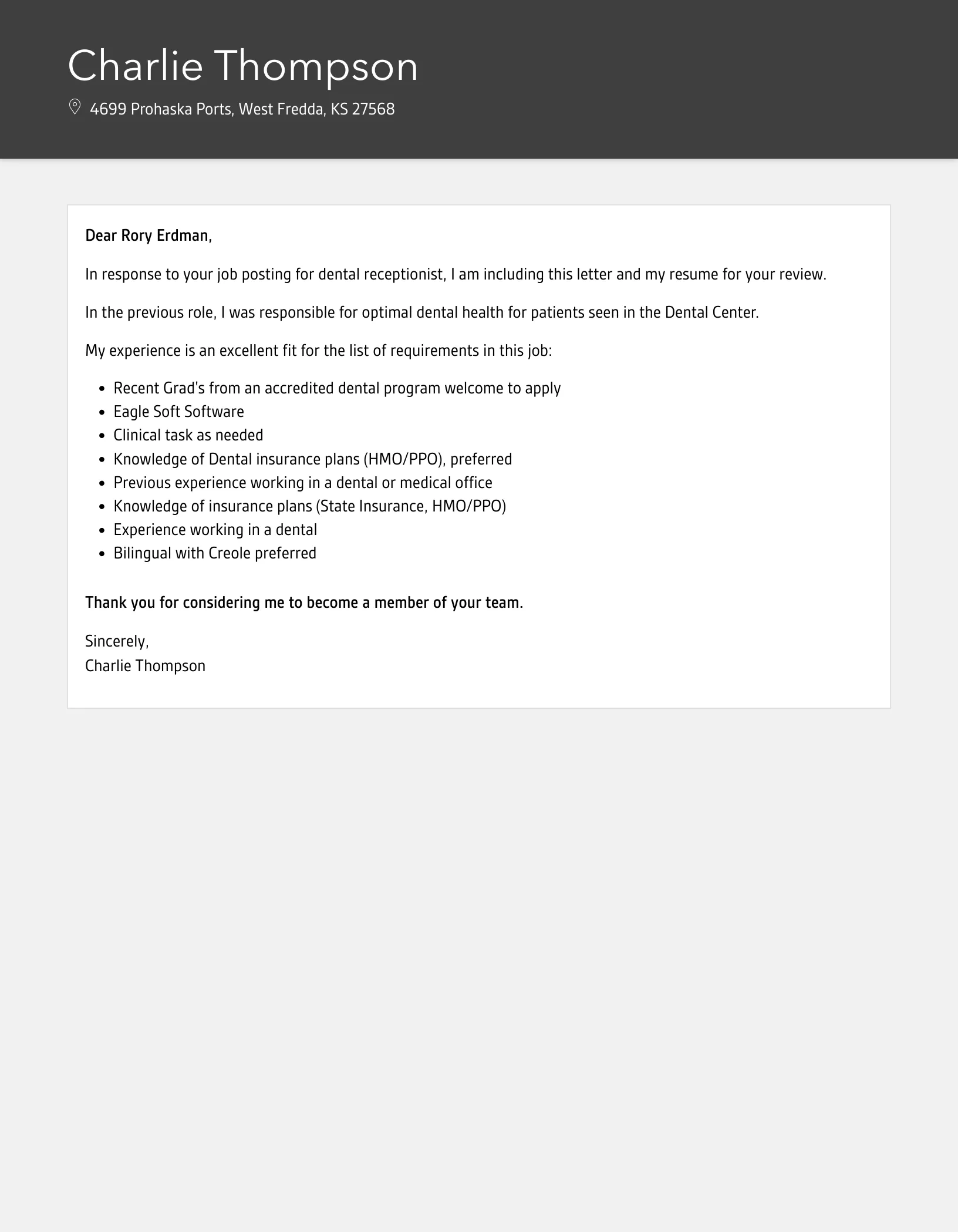Crafting Your Dental Receptionist Cover Letter
A well-crafted cover letter is your first opportunity to make a positive impression on a potential employer. For a dental office receptionist position, your cover letter should not only showcase your skills and experience but also demonstrate your understanding of the role and your enthusiasm for the opportunity. This guide will walk you through the essential components of a compelling cover letter, helping you stand out from other applicants and increase your chances of landing an interview. Remember, your cover letter is your personal marketing document, so take the time to make it shine.
Understanding the Role
Before you begin writing, it’s crucial to understand the responsibilities and required skills of a dental office receptionist. This will help you tailor your cover letter to highlight the most relevant qualifications. Dental receptionists are the first point of contact for patients, so your cover letter should reflect your ability to provide excellent customer service, manage schedules efficiently, and handle sensitive information with discretion. Researching the specific dental office you are applying to can also help tailor your letter to their needs and culture.
Key Responsibilities of a Dental Receptionist
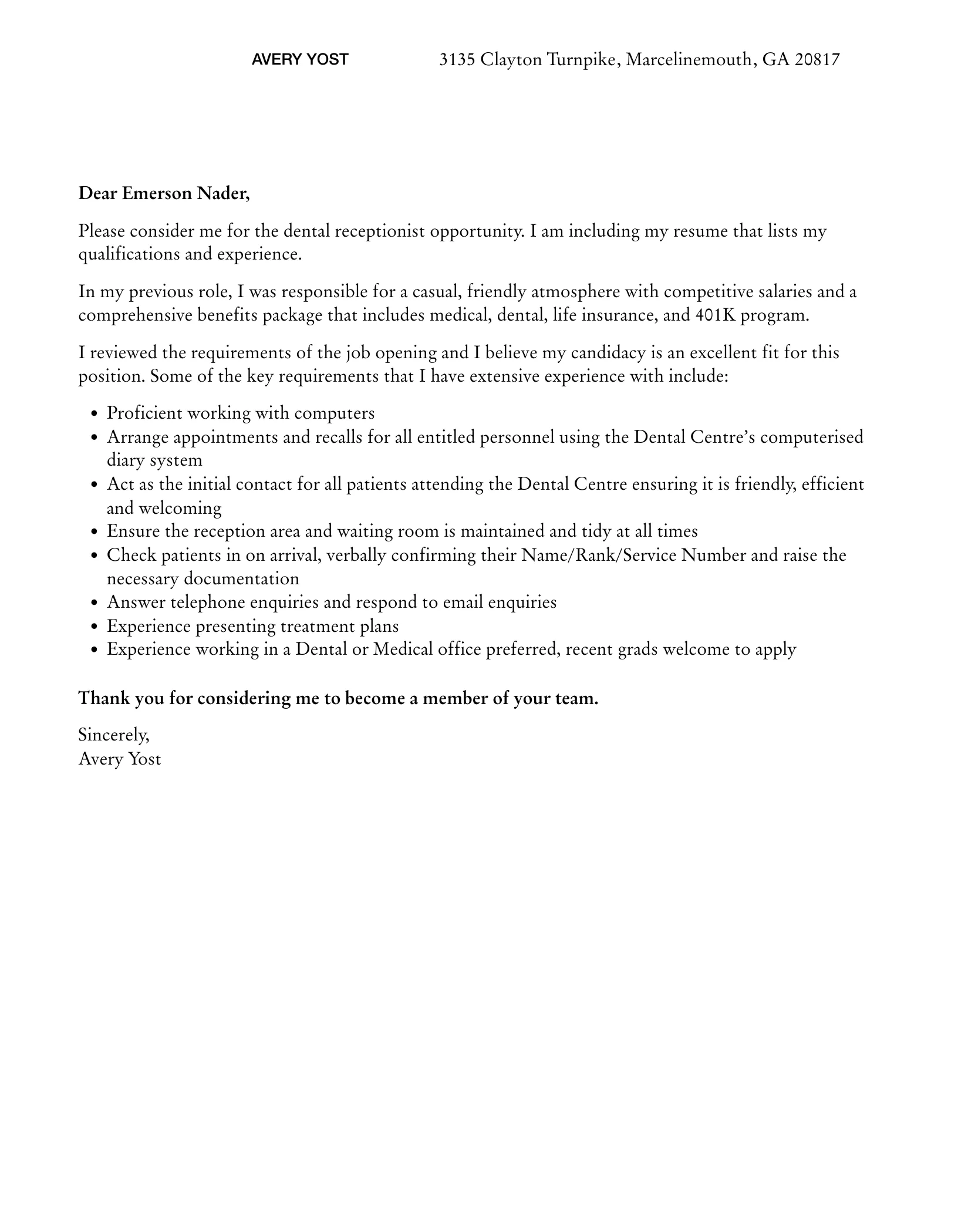
Dental receptionists manage a wide array of tasks, including greeting patients, answering phones, scheduling appointments, managing patient records, processing payments, and coordinating with dental staff. They also handle administrative tasks such as insurance verification, correspondence, and maintaining a clean and organized reception area. A good cover letter will reflect an understanding of these responsibilities and how your skills align with them.
Essential Skills to Highlight
Your cover letter should emphasize the skills most relevant to a dental receptionist role. These typically include excellent communication, strong organizational abilities, proficiency with dental software, a friendly and professional demeanor, and the ability to multitask. Highlight specific instances where you’ve successfully demonstrated these skills in previous roles or other relevant experiences. For example, mentioning your experience with specific dental software or patient management systems will be very beneficial.
Formatting Your Cover Letter
Proper formatting is essential for readability and professionalism. Your cover letter should be easy to read, well-organized, and free of errors. Use a standard business letter format with a clear layout, consistent font, and appropriate spacing. Poorly formatted cover letters can create a negative impression, so pay close attention to detail when preparing your document. Consider using a template as a starting point, but always customize it to fit your personal experience and the specific job requirements.
Contact Information and Date
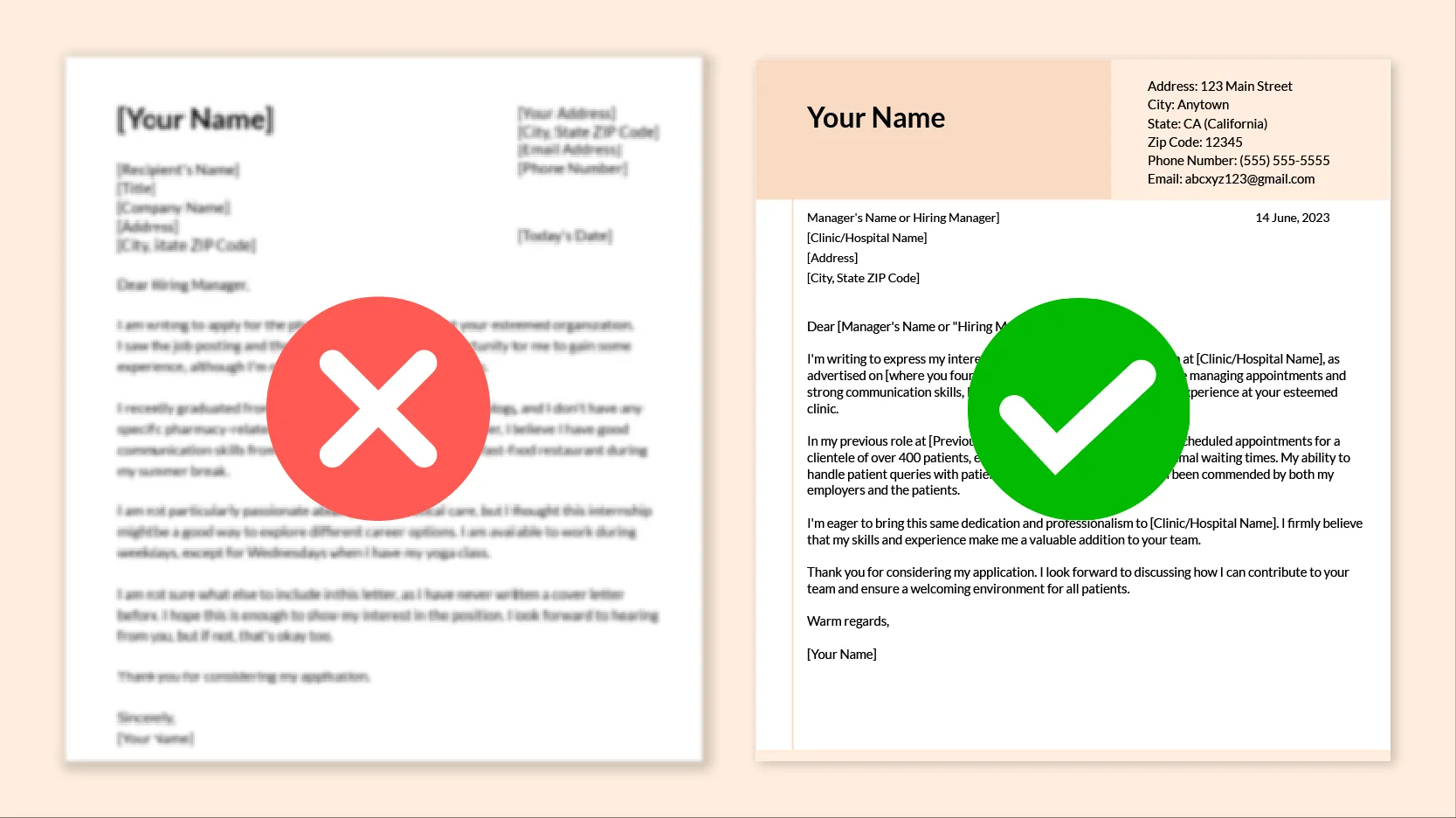
At the top of your cover letter, include your full name, address, phone number, and email address. Directly beneath this, include the date. This ensures the employer can easily reach you. Make sure that your email address is professional and appropriate for a job application. Avoid using nicknames or informal language in your contact information. The date helps establish when the letter was written.
Greeting the Hiring Manager
Start your cover letter with a professional greeting. If possible, address the hiring manager by name (e.g., “Dear Dr. Smith”). This shows that you’ve done your research and that you’re genuinely interested in the position. If you’re unable to find the hiring manager’s name, use a general greeting such as “Dear Hiring Manager” or “Dear [Dental Office Name] Team”. Avoid generic greetings that come across as impersonal.
Body Paragraphs
The body of your cover letter is where you sell yourself and make your case for why you’re the best candidate. Structure your body paragraphs logically, focusing on your relevant skills and experiences. The goal is to convince the hiring manager that you’re a good fit for the dental office and the specific role. Always tailor the content to the specific job description and dental practice.
First Paragraph Introduce Yourself
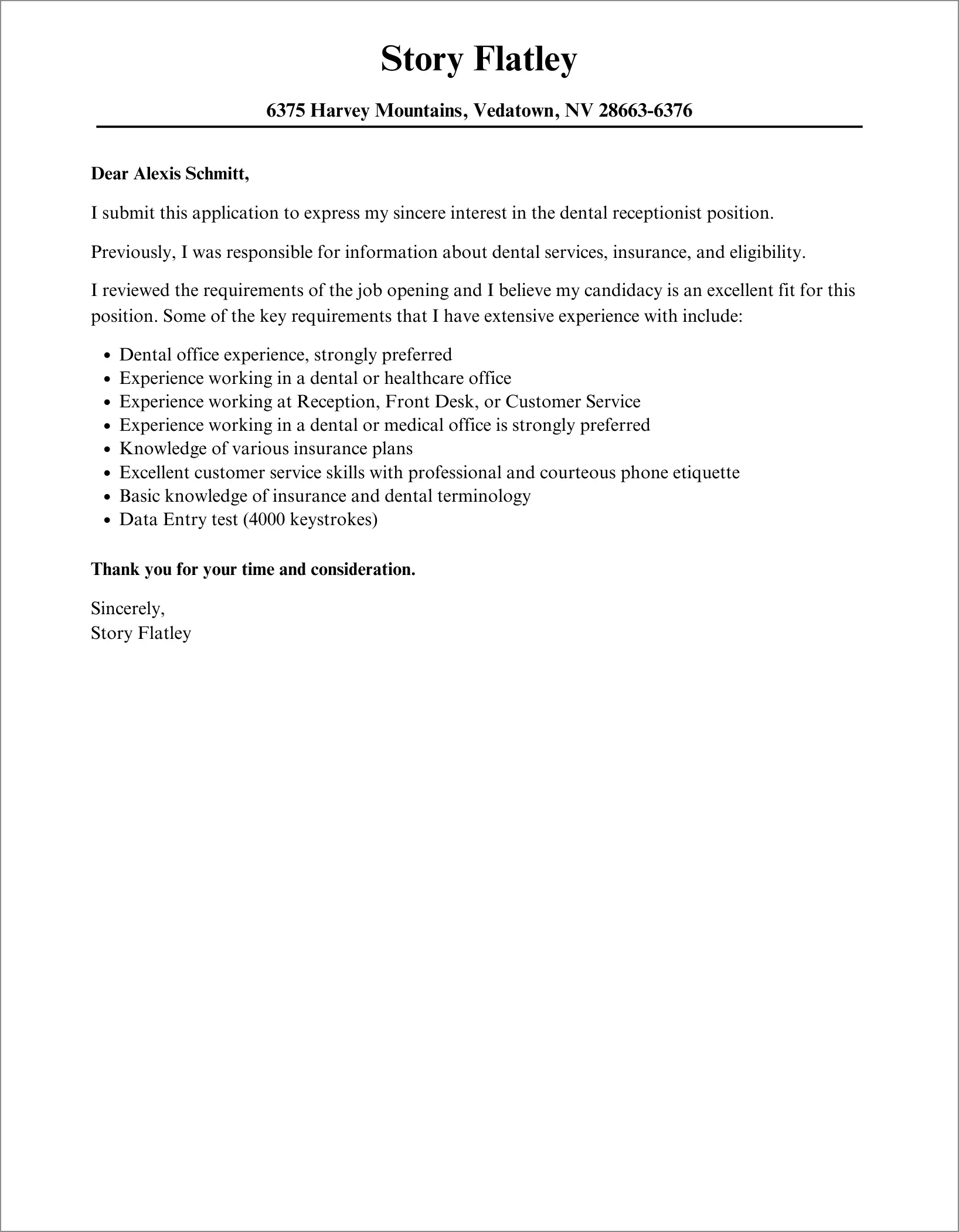
Begin your first paragraph by stating the position you’re applying for and where you saw the job posting. Briefly mention your key qualifications and express your enthusiasm for the opportunity. This paragraph should provide a clear and concise overview of your application. You can briefly mention what excites you about the specific dental practice or the opportunity itself.
Second Paragraph Showcase Skills
In your second paragraph, elaborate on your skills and experience. Use specific examples to demonstrate how you’ve successfully handled similar responsibilities in the past. Quantify your achievements whenever possible (e.g., “Managed a schedule with 30+ patients per day”). Refer back to the job description to highlight the skills and experiences that the employer is looking for. Make sure this section is clear, specific, and shows the value you’ll bring to the dental office.
Third Paragraph Express Interest
The third paragraph should express your strong interest in the specific dental office and the position. Mention what attracts you to the practice and what you admire about their approach to patient care or their reputation in the community. Briefly reiterate your qualifications and your enthusiasm for the opportunity. This paragraph should show that you are genuinely interested in the practice.
Concluding Your Letter
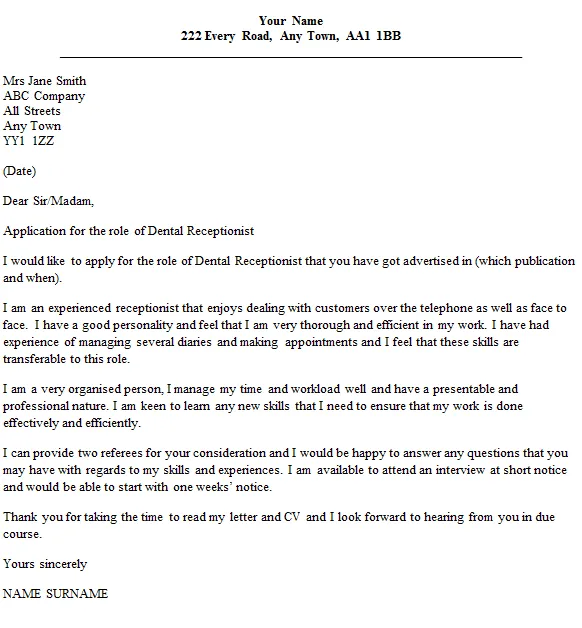
Conclude your cover letter by thanking the hiring manager for their time and consideration. Reiterate your interest in the position and state your availability for an interview. Include a call to action, such as “I look forward to the opportunity to discuss my qualifications further.” End with a professional closing (e.g., “Sincerely,” or “Respectfully,”) and your full name.
Proofreading and Editing
Proofreading is a critical step in the cover letter writing process. Carefully review your letter for any grammatical errors, spelling mistakes, or typos. A cover letter filled with errors can immediately disqualify you from consideration. It’s also helpful to have someone else proofread your letter; a fresh pair of eyes can often catch mistakes you might miss. Pay special attention to the details to ensure your letter is polished and professional.
Tips for Success
Following these tips can significantly enhance your chances of success in your job search. Make sure you present yourself in the best possible light and tailor your approach to the job and the dental practice.
Tailoring to the Specific Job
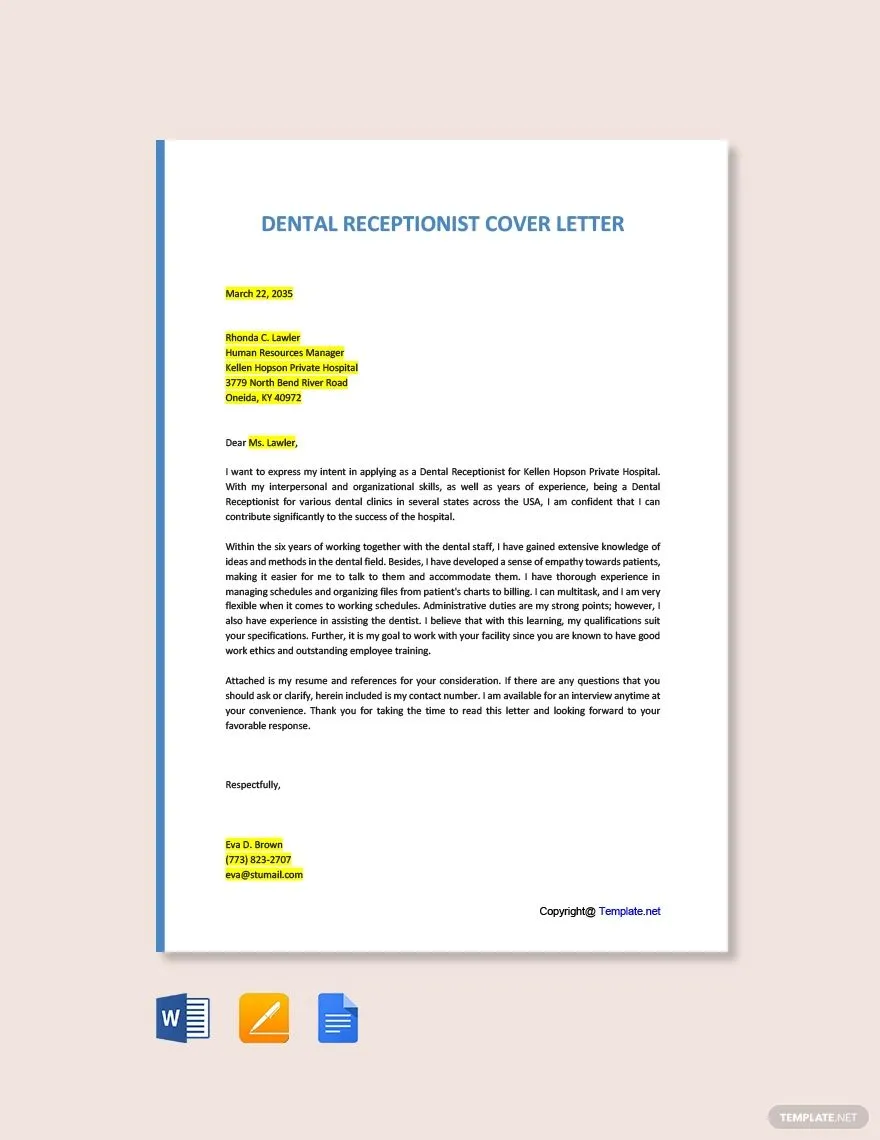
Each cover letter should be customized to the specific job description. Read the job posting carefully and identify the key skills and experiences the employer is seeking. Then, highlight your qualifications that align with those requirements. The more relevant your letter is to the job, the more likely you are to capture the hiring manager’s attention. Avoid using a generic cover letter for every application.
Highlighting Relevant Experience
Focus on your relevant experience. If you have experience in a dental office, emphasize it. If not, highlight transferable skills from other positions, such as customer service, administrative support, or managing schedules. Mentioning any experience with dental software or patient management systems is particularly beneficial. This will demonstrate your ability to quickly learn and adapt to the new environment.
Using Action Verbs Effectively
Using strong action verbs can make your cover letter more compelling and dynamic. They help you showcase your accomplishments and skills more effectively. Avoid using passive language. Instead, use action verbs to describe what you have achieved in your previous roles. Make your achievements more tangible to the reader.
Examples of Strong Action Verbs
Incorporate action verbs like managed, coordinated, scheduled, implemented, trained, organized, resolved, and improved. For example, instead of writing “Responsible for answering phones,” write “Answered and directed an average of 50+ calls daily, providing excellent customer service.” Action verbs are essential to make your cover letter powerful and show your accomplishments. They show the reader how you perform your tasks.
Following Up After Submission
After submitting your cover letter and resume, follow up with the hiring manager within a week to ten days. A brief email or phone call to express your continued interest and confirm that they received your application can show your enthusiasm. However, be mindful not to be overly persistent. A simple, polite follow-up can increase your chances of an interview.
